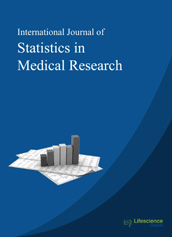IJSMR
International Journal of Statistics in Medical Research | Volume 5 Number 2
|
|
|
Survival Analysis of Duration of Breastfeeding and Associated Factors of Early Cessation of Breastfeeding in Ethiopia - Pages 71-79
Confidence Intervals for the Population Correlation Coefficient ρ - Pages 99-111 A Declaratory Model of Generalized Regression Neural Network (GRNN) for Estimating Sleep Apnea Index in the Elderly Suffering from Sleep Disturbance - Pages 112-119 Study on Temporal Effects of Urban Malaria Incidences - Pages 120-132 |
Abstract : The Method of Randomization for Cluster-Randomized Trials: Challenges of Including Patients with Multiple Chronic Conditions
|
|
Abstract: Cluster-randomized clinical trials (CRT) are trials in which the unit of randomization is not a participant but a group (e.g. healthcare systems or community centers). They are suitable when the intervention applies naturally to the cluster (e.g. healthcare policy); when lack of independence among participants may occur (e.g. nursing home hygiene); or when it is most ethical to apply an intervention to all within a group (e.g. school-level immunization). Because participants in the same cluster receive the same intervention, CRT may approximate clinical practice, and may produce generalizable findings. However, when not properly designed or interpreted, CRT may induce biased results. CRT designs have features that add complexity to statistical estimation and inference. Chief among these is the cluster-level correlation in response measurements induced by the randomization. A critical consideration is the experimental unit of inference; often it is desirable to consider intervention effects at the level of the individual rather than the cluster. Finally, given that the number of clusters available may be limited, simple forms of randomization may not achieve balance between intervention and control arms at either the cluster- or participant-level. In non-clustered clinical trials, balance of key factors may be easier to achieve because the sample can be homogenous by exclusion of participants with multiple chronic conditions (MCC). CRTs, which are often pragmatic, may eschew such restrictions. Failure to account for imbalance may induce bias and reducing validity. This article focuses on the complexities of randomization in the design of CRTs, such as the inclusion of patients with MCC, and imbalances in covariate factors across clusters. Keywords: Experimental Design, Randomization, Cluster Randomized Trials, Multiple Chronic Conditions.Download Full Article |
International Journal of Statistics in Medical Research | Volume 5 Number 1
|
|
|
|
Special Issue Methods for Estimating Treatment Effects of Persons with Multiple Chronic Conditions
General Articles
|
International Journal of Statistics in Medical Research | Volume 4 Number 4
|
|
|
Modeling of the Deaths Due to Ebola Virus Disease Outbreak in Western Africa - Pages 306-321 Predicting Breast Cancer Mortality in the Presence of Competing Risks Using Smartphone Application Development Software - Pages 322-330
Specification of Variance-Covariance Structure in Bivariate Mixed Model for Unequally Time-Spaced Longitudinal Data - Pages 370-377 Determinants of Utilization of Maternal Healthcare Services in Ethiopia - Pages 378-390 |





 Heather G Allore
Heather G Allore


















